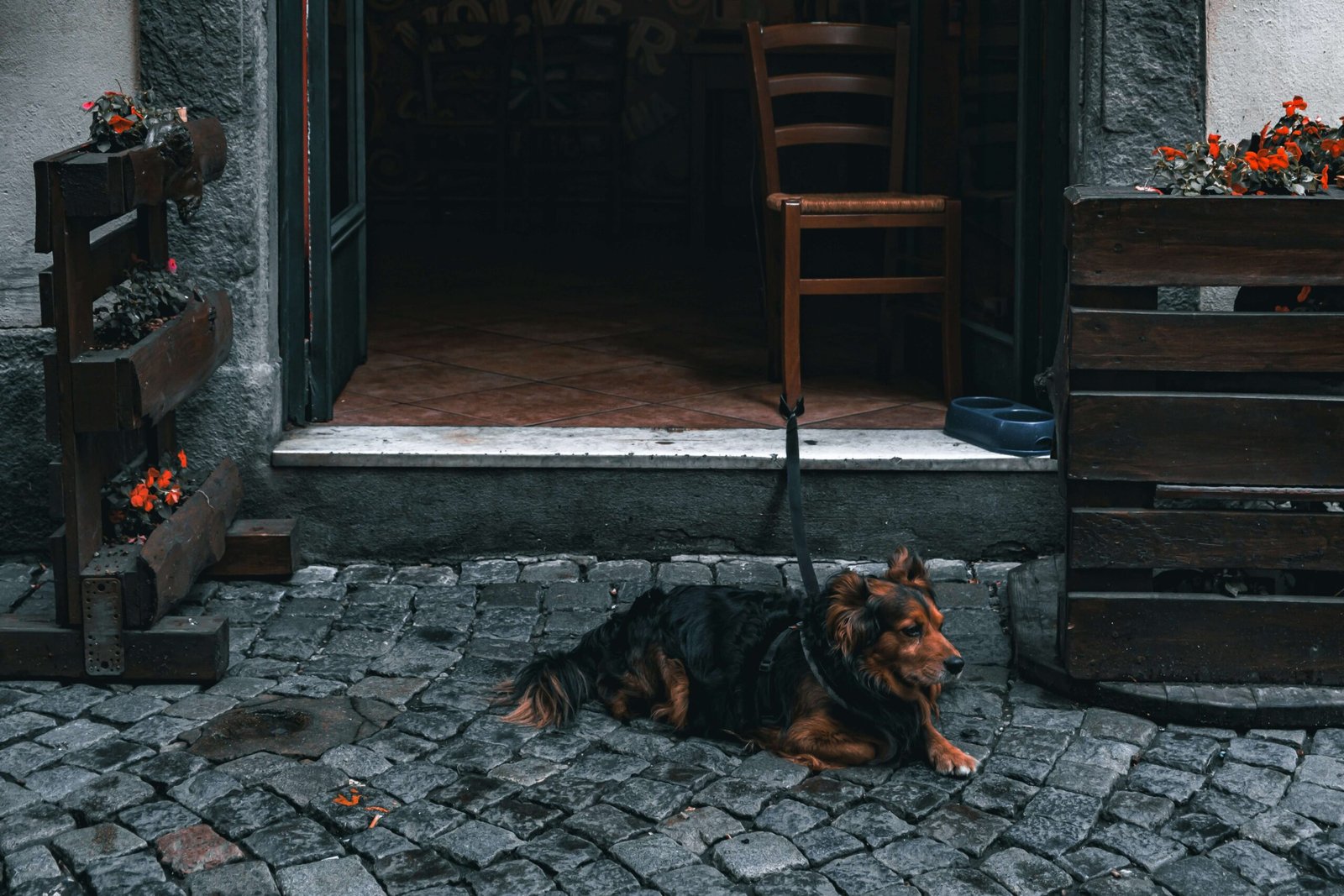Why Does My Dog Twitch in His Sleep? Unveiling the Mystery
Have you ever watched your furry friend sleeping peacefully, only to notice sudden twitches or movements that make you wonder what’s going on? It’s a common question among dog owners: Why does my dog twitch in his sleep? Whether it’s a gentle leg kick, a wagging tail, or even a soft whimper, these behaviors can be both endearing and puzzling. Understanding why dogs twitch during sleep not only satisfies our curiosity but also helps us ensure their well-being. In this blog post, we’ll explore the fascinating world of canine sleep patterns, delve into the reasons behind those adorable nighttime twitches, and provide tips to help your pup sleep soundly.
What Causes Dogs to Twitch in Their Sleep?
Dogs experience various stages of sleep, much like humans do, and twitching often occurs during specific phases. Here’s a breakdown of the most common causes:
REM Sleep Activity
During REM (Rapid Eye Movement) sleep, the brain is highly active, and this is when dreams occur. Dogs may twitch as their bodies respond to dream scenarios, such as chasing a squirrel or playing fetch.Muscle Relaxation and Spasms
As dogs drift into deeper sleep, their muscles relax completely. This can lead to involuntary muscle spasms or twitches, which are harmless and temporary.Temperature Regulation
If your dog feels cold, they might twitch as their body attempts to generate warmth. Providing a cozy blanket can help reduce this type of movement.Age and Developmental Factors
Puppies and senior dogs are more prone to twitching due to their developing or aging nervous systems. Younger dogs often dream more vividly, while older dogs may experience neurological changes.Underlying Health Conditions
While rare, excessive twitching could indicate an underlying issue such as epilepsy or nerve-related problems. Consult a vet if the twitching seems abnormal or frequent.
Understanding these factors can give you peace of mind and help you differentiate between normal sleep behavior and potential concerns.
How Can You Tell If Your Dog Is Dreaming?
It’s natural to wonder whether your dog’s twitching is linked to dreaming. Here’s how you can identify signs that your pup is immersed in a dream world:
Facial Expressions
Watch for subtle changes in your dog’s face, such as twitching whiskers, moving eyelids, or a slight smile. These cues often indicate active dreaming.Vocalizations
Soft whimpers, growls, or barks during sleep can suggest your dog is vocalizing their dream experiences. It’s usually nothing to worry about unless it becomes excessive.Body Movements
Running motions with their legs, tail wagging, or head tilting are classic signs of a dog acting out their dreams. These movements are typically brief and sporadic.Relaxed Posture
A deeply relaxed body posture, combined with rhythmic breathing, shows that your dog is likely in a deep sleep phase where dreaming occurs.Timing of Twitches
Most dogs enter REM sleep about 20 minutes after falling asleep. If twitching happens around this time, it’s likely related to dreaming.
By observing these signs, you can better understand your dog’s sleep habits and enjoy watching them live out their nighttime adventures.
Check this guide 👉Why Is My Dog Twitching? Best 7 Health Tips!
Check this guide 👉Why Does My Dog Sleep on My Head? Best 7 Behavior Tips!
Check this guide 👉Why Does My Dog Sleep Under My Bed? Best 7 Expert Tips!

Signs of Normal Sleep Twitching | Signs of Potential Concerns |
|---|---|
Occurs during REM sleep | Twitching lasts for extended periods |
Accompanied by relaxed breathing | Twitching disrupts overall sleep quality |
Happens intermittently | Includes seizures or loss of consciousness |
Common in puppies and seniors | Associated with unusual vocalizations |
Stops when gently woken up | Persists despite environmental adjustments |
Tips to Help Your Dog Sleep Better
Ensuring your dog has a restful night’s sleep can minimize unnecessary twitching and promote overall health. Here are some practical tips:
Create a Comfortable Sleeping Area
Provide a soft bed in a quiet, low-traffic area of your home. Adding familiar scents, like their favorite blanket, can enhance comfort.Maintain a Consistent Routine
Dogs thrive on routine. Establish regular feeding, exercise, and bedtime schedules to help regulate their internal clock.Engage in Daily Exercise
Physical activity tires your dog out mentally and physically, reducing restlessness at night. Aim for at least one long walk or play session daily.Monitor Their Diet
Avoid heavy meals right before bedtime, as digestion can interfere with sleep. Opt for easily digestible foods if needed.Limit Stimulants Before Bed
Exciting games or loud noises close to bedtime can overstimulate your dog. Wind down activities an hour before sleep.
Implementing these strategies can create a calming environment that supports healthy sleep patterns.
When Should You Be Concerned About Twitching?
While occasional twitching is normal, certain behaviors warrant closer attention. Here’s what to look out for:
Frequent or Intense Episodes
If your dog twitches excessively or appears distressed, it could signal a medical issue requiring professional evaluation.Accompanying Symptoms
Excessive drooling, panting, or unresponsiveness during twitching episodes may indicate a seizure or other neurological problem.Changes in Behavior
Sudden shifts in sleep patterns, appetite, or energy levels alongside twitching should prompt a vet visit.Twitching While Awake
Muscle spasms or uncontrollable movements during waking hours are not normal and need immediate investigation.Age-Specific Concerns
Puppies and elderly dogs may have unique needs. For instance, persistent twitching in older dogs could point to cognitive decline or arthritis.
Being vigilant about these warning signs ensures your dog receives timely care if needed.
Common Misconceptions About Dog Twitching
Many pet owners have heard various myths about why dogs twitch in their sleep. While some of these ideas are harmless, others can lead to unnecessary worry. Let’s clear up a few common misconceptions:
Myth: Twitching Always Indicates a Nightmare
Dogs don’t experience nightmares in the same way humans do. Most twitching is simply a result of normal brain activity during REM sleep.Myth: All Twitching Is Harmless
While most cases are benign, persistent or unusual twitching could signal an underlying health issue. It’s important to monitor your dog’s behavior closely.Myth: You Should Never Wake a Twitching Dog
Contrary to popular belief, gently waking a twitching dog won’t harm them. However, it’s best to avoid startling them awake abruptly.
Understanding these facts helps dispel unnecessary fears and ensures you respond appropriately to your dog’s sleep behaviors.
Fun Facts About Dog Sleep Patterns
Dogs share many similarities with humans when it comes to sleep, but they also have unique traits that make their slumber fascinating. Here are some intriguing tidbits about canine sleep patterns:
Dogs Spend More Time in REM Than Humans
While humans spend about 25% of their sleep in REM, dogs dedicate around 10-12% of their total sleep time to this phase.Small Breeds Dream More Often
Smaller dogs tend to enter REM sleep more frequently than larger breeds, which may explain why they twitch more often.Puppies Dream Almost Constantly
Young puppies spend a significant portion of their sleep dreaming, as their brains are developing rapidly.Dogs Can Adapt Their Sleep to Human Schedules
Unlike wild animals, domesticated dogs have learned to align their sleep cycles with their human companions.
These fun facts highlight the complexity and adaptability of our furry friends’ sleep habits, making them even more remarkable.
How to Comfort a Twitching Dog
If your dog’s nighttime twitching seems excessive or leaves you feeling uneasy, there are ways to comfort them without disrupting their rest. Here are some practical suggestions:
Provide a Cozy Bed
Ensure your dog has a soft, supportive bed that keeps them warm and comfortable throughout the night.Use Calming Scents
Lavender or chamomile scents can create a soothing atmosphere. Place a drop near their sleeping area (but not directly on fabrics).Play Soothing Music
Gentle, slow-tempo music or white noise can help lull your dog into a deeper state of relaxation.Maintain a Peaceful Environment
Keep noise levels low and minimize disturbances in the room where your dog sleeps.Offer Reassurance Without Waking Them
Gently stroke your dog if they seem restless, but avoid waking them unless absolutely necessary.
By implementing these strategies, you can create a calming environment that supports your dog’s natural sleep rhythms while easing any concerns you might have.
Frequently Asked Questions About Dog Twitching in Sleep
Is it normal for dogs to twitch in their sleep?
Yes, occasional twitching is perfectly normal and often related to dreaming or muscle relaxation.
Do all dogs dream?
Most experts believe that all dogs dream, though the frequency and intensity may vary based on age, breed, and personality.
Can I wake my dog from a twitching episode?
It’s generally safe to gently wake them, but avoid startling them abruptly as they may be disoriented.
How long does REM sleep last in dogs?
Dogs spend about 10-12% of their total sleep time in REM, which translates to roughly 20-30 minutes per sleep cycle.
Should I take my dog to the vet for twitching?
Only if the twitching is frequent, intense, or accompanied by other concerning symptoms.
Embracing the Magic of Your Dog’s Sleep
Watching your dog twitch in their sleep offers a glimpse into their inner world—a world filled with playful chases, joyful reunions, and perhaps even the occasional nap under the sun. By understanding why these movements occur and knowing how to support your dog’s sleep, you’re strengthening the bond you share. Remember, every wag, whimper, and twitch is a testament to their vibrant spirit. So the next time you catch your furry companion lost in a dream, take a moment to appreciate the beauty of their slumber. After all, a happy, well-rested dog makes for a happier home—and isn’t that what every pet parent desires?
Understanding Cryptosporidium in Cats: Best 7 Expert Tips! – Spot symptoms, treat safely, and stop parasite spread in your home.
Understanding Cryptosporidium in Dogs: Best 7 Expert Tips! – Learn symptoms, treatment & prevention for this stubborn gut parasite.
Understanding Syringomyelia in Cats: Best 7 Expert Tips! – Recognize signs, manage pain, and support your cat’s neurological health with vet-backed guidance.
Understanding Syringomyelia in Dogs: Best 7 Expert Tips! – Expert insights on symptoms, MRI diagnosis, pain management & quality of life.





